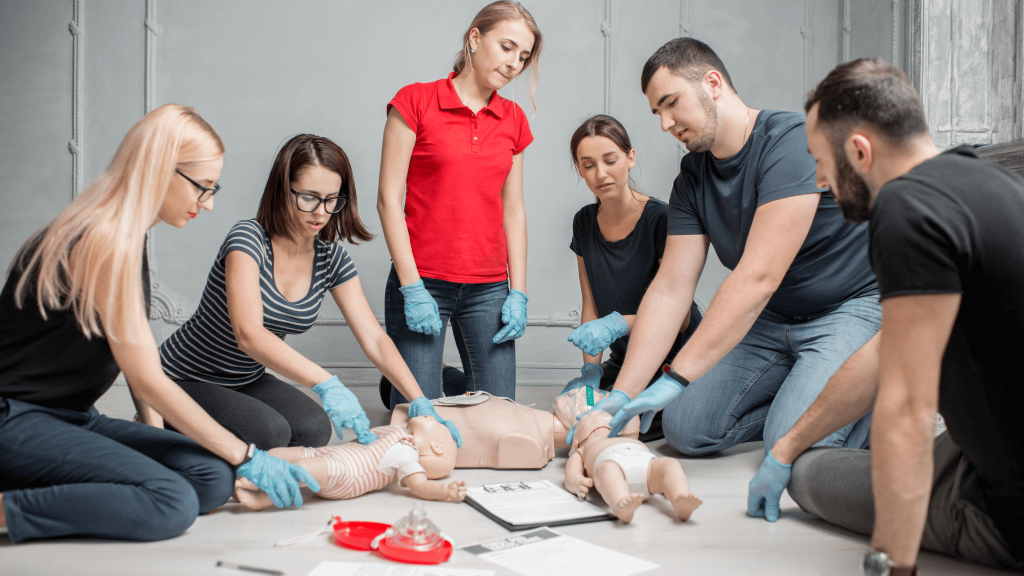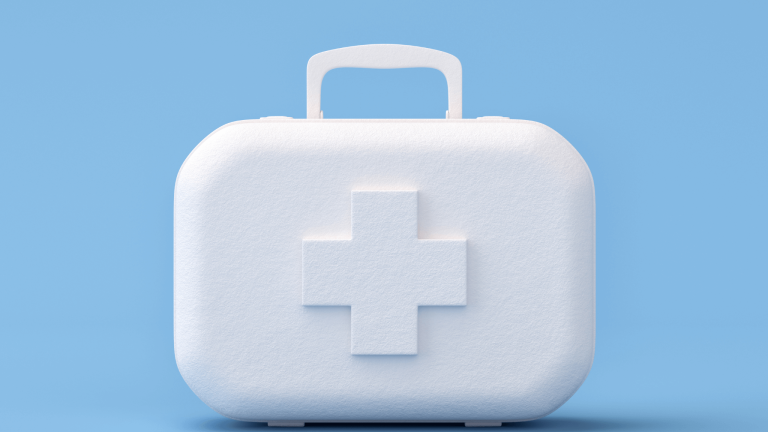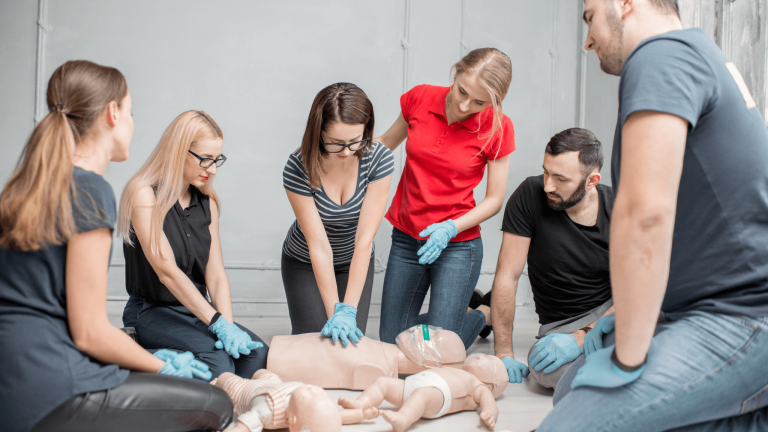Performing CPR on a Child

Most people know how to perform CPR on an adult, but what if you need to administer CPR to a child?
In this blog post, we will provide step-by-step instructions on how to perform CPR on a child, as well as tips for helping children stay safe. Keep in mind that every situation is different, so if you are ever in doubt about what to do, please call an ambulance immediately.
In this blog post you will learn:
- When to perform CPR
- How to check for breathing
- How to give compressions
- How to give rescue breaths
- What to do if the child starts breathing again
- When to call emergency services
Let’s look at these points in more detail:
- If a child appears to have suddenly stopped breathing, it is important to start CPR for a child right away. The sooner you start, the better the chances of survival.
- To check for breathing, use the Look-Listen-Feel technique. Place your face down so that your cheek is almost against the childs mouth, looking down towards their feet. Here you will stay for 10 seconds whilst you look for chest rise, feel for their breath and listen for breath sounds.
- If the child is not breathing you start CPR. Compressions should be given at a rate of 100-120 per minute (or 2 per second). This can be difficult to keep up, so if you need help, don’t hesitate to call emergency services.
- To give rescue breaths, pinch the victim’s nose shut and seal your lips around their mouth. Give two slow breaths, making sure that the chest rises.
- If the child starts breathing on their own, continue to monitor them closely and call emergency services if they show any signs of respiratory distress.
- If you are ever in doubt about what to do, please call an ambulance immediately.
Time is of the essence when it comes to CPR, and every second counts.
CPR stands for Cardiopulmonary resuscitation, and it is an emergency procedure that can be used to save someone’s life who is not responding and has stopped breathing. The first step in performing CPR on a child is to make sure the scene is safe and then check to see if the child is responsive. If the child is unresponsive and not breathing properly or at all, you will want to begin chest compressions suitable for a child. It’s important to keep calm when performing CPR on a child; panicking could lead to making mistakes. Have you done a child first aid course?
CPR, or cardiopulmonary resuscitation, is a life-saving technique that can be used when someone is not responding and has stopped breathing. Child CPR is an important skill for childcares, schools, parents and caregivers to know, as it could one day save a child’s life.
CPR can be performed on children of all ages, but the techniques may vary slightly depending on the age of the child. It’s important to keep calm when performing CPR; panicking could lead to making mistakes.
If you are ever in doubt about what to do, please call an ambulance immediately. Time is of the essence when it comes to CPR, and every second counts.

Child CPR can be performed on children of all ages, but the techniques may vary slightly depending on the age of the child. For example, compressions for infants under one year old are done at a rate of 100-120 per minute, using two fingers. Child CPR (over 1 year old) should be performed using one hand. Over 8 years old, two hands may be more appropriate.
To perform CPR on a child:
- Check the scene for safety and then check the child for responsiveness by tapping them lightly on the shoulder and shouting “Are you okay?” If there is no response, call emergency services immediately.
- Check their breathing using the Look-Listen-Feel technique from above for 10 seconds. If they are not breathing or not breathing properly, begin chest compressions by placing the heel of your hand in the center of the child’s chest. For children aged 1-8 years use one hand. For infants under one year old, use two fingers. Compress the chest by 1/3 of its depth, or approximately 1 inch. For children over one year old, compress the chest by at least 2 inches.
- Give 30 chest compressions at a rate of 100-120 per minute
- For children over 1 year of age, open the child’s airway by tilting their head back and lifting their chin.
- Pinch the child’s nose shut and seal your lips around their mouth to give two rescue breaths. Continue until help arrives or the child recovers.
- If the child starts breathing on their own, continue to monitor them closely and call emergency services if they show any signs of distress.

Child CPR is an important skill for parents and caregivers to know, as it could one day save a child’s life. Knowing how to perform CPR can mean the difference between life and death in an emergency situation – so don’t hesitate to learn more below today.
First Aid Certificate
The First Aid Nest run public and workplace first aid courses, Australia wide.
Our workplace first aid courses can be run at your site.
Our public classes are here in Sydney and are the best option if you are an individual, a couple or a group of just a few people.
Our sophisticated system will take the headache out of renewal for you too. Lose your certificate? No problem, just log in and download your certificate again anytime. We will also send you reminders about when your certificate is about to expire!
Book your spot or workplace with us today, contact us with any questions, or head to our FAQ page.

